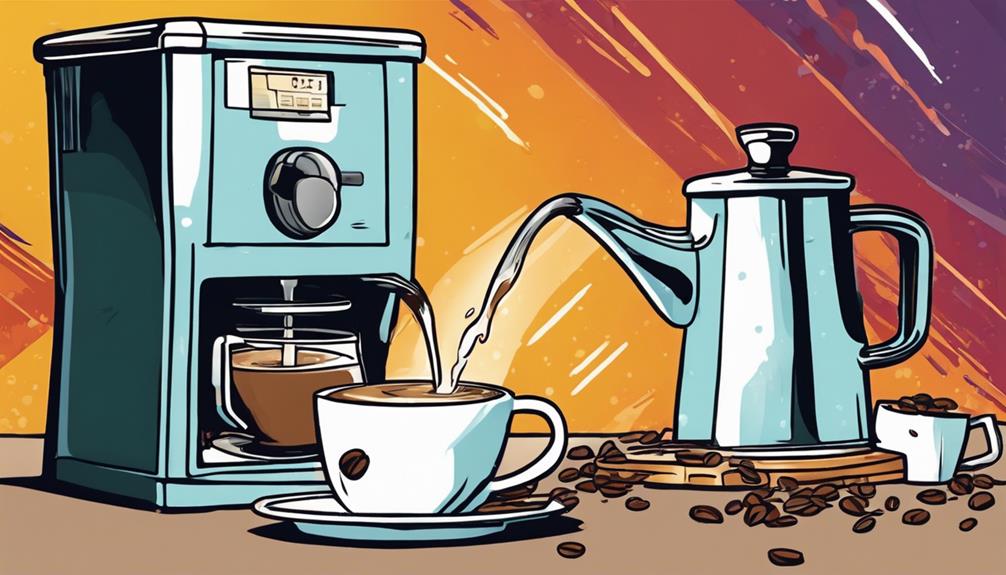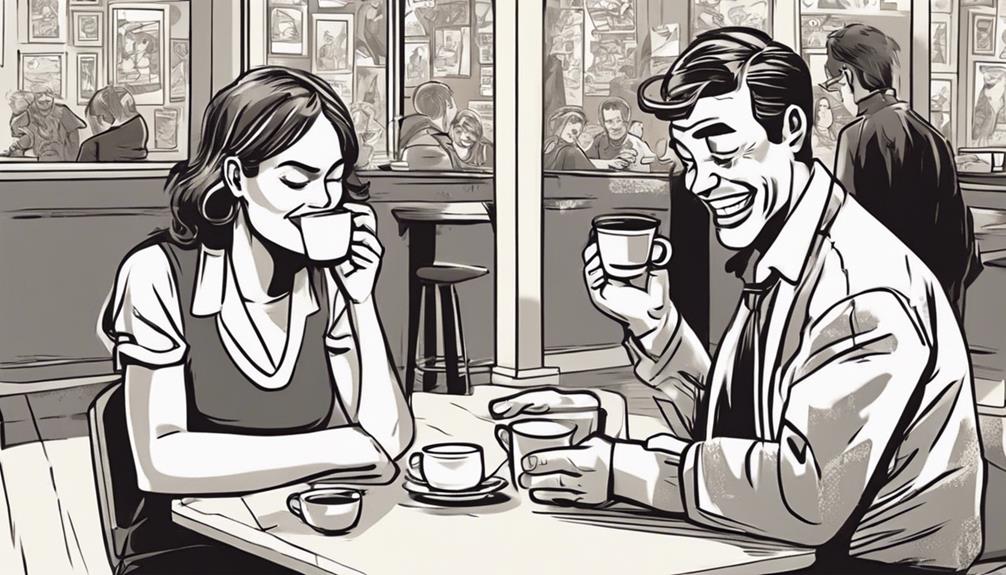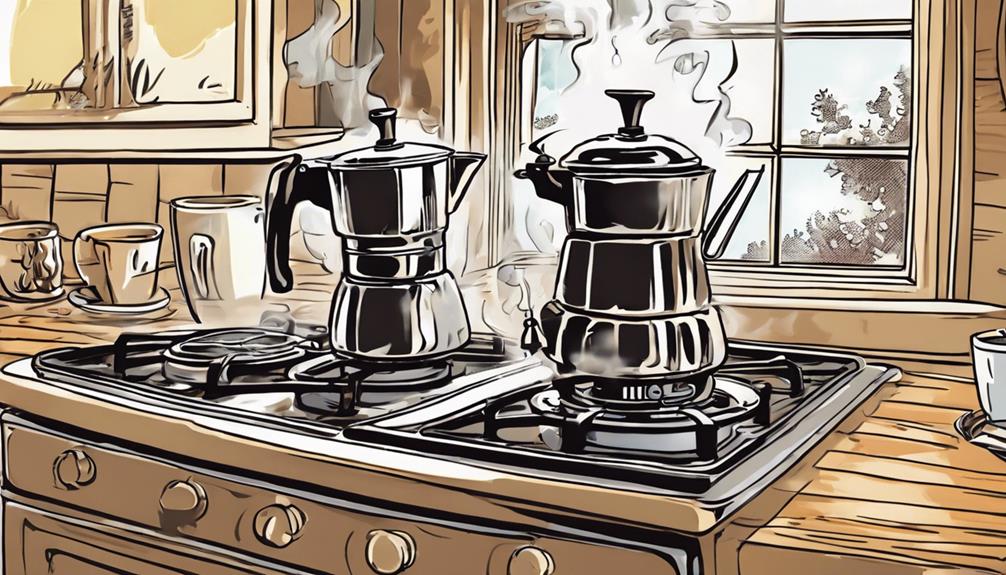Ready to take your coffee to the next level with a blender? Prepare yourself for a frothy, flavorful treat that will impress your taste buds! Start with high-quality coffee beans, quality milk, and a touch of sweetener. Add in some spices for an extra kick, then blend everything together using a powerful blender. Mix at a high speed for that smooth, creamy texture. Pour into a cup, making sure to leave room for foam. Enjoy while hot for the best flavor. Sprinkle on some extra toppings for a fancy finish. Want more tips on creating the perfect frothy coffee blend? Check out our latest cinnamon stick coffee recipe, which will elevate your frothy coffee experience even more. Simply add a cinnamon stick to your blender along with the other ingredients for an added burst of flavor and aroma. Blend until the cinnamon is well incorporated, then pour into your cup and garnish with a fresh cinnamon stick for a visually appealing and delicious drink. Keep experimenting with different spices and flavors to craft your own signature frothy coffee masterpiece.
Key Takeaways
- Use high-quality coffee beans and hot coffee for a strong base.
- Experiment with different spices, syrups, and sweeteners for flavor.
- Blend at high speed for dense froth or extended time for silkier texture.
- Add milk or dairy alternatives before blending for a creamy consistency.
- Customize with toppings like whipped cream or chocolate shavings for a delightful finish.
Benefits of Using a Blender
By using a blender, you can effortlessly enhance your coffee experience with a frothy texture that elevates the overall taste. Blending coffee not only adds a layer of indulgence but also guarantees that the flavors are evenly incorporated, resulting in a consistently delicious brew every time.
The versatility of blenders opens up a world of possibilities for mixing various ingredients to create different coffee recipes with ease.
Moreover, blending coffee aids in emulsifying ingredients like milk or cream, leading to a smoother and more luxurious texture in your drink. Whether you prefer a creamy latte or a velvety cappuccino, the blender can quickly whip up a cafe-quality beverage right in the comfort of your home.
Say goodbye to long lines at coffee shops and embrace the convenience and efficiency of blending your coffee to perfection.
Choosing the Right Ingredients
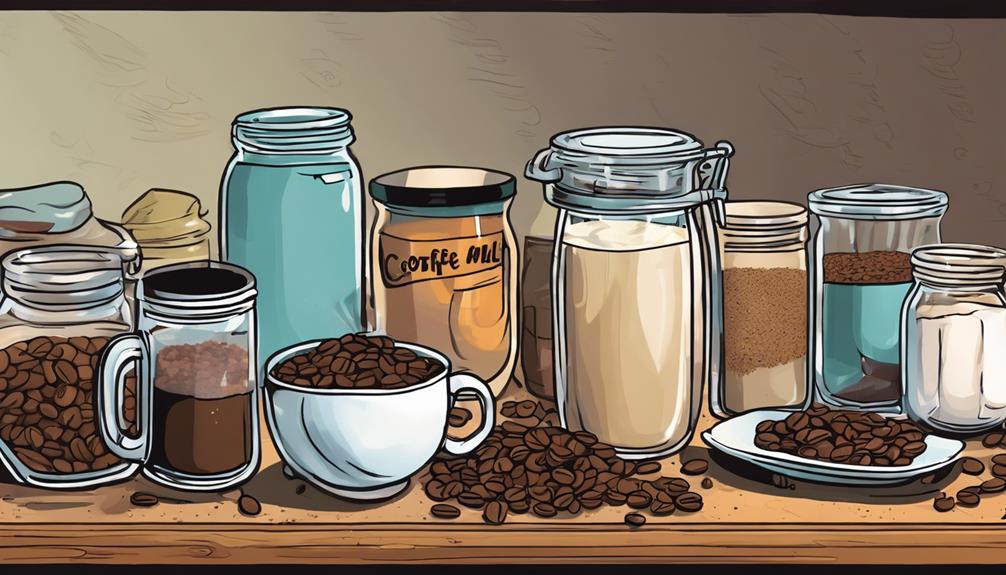
When making your blended coffee, start by selecting the right ingredients to enhance the flavor and texture of your brew.
Freshly ground coffee beans are essential for a rich taste, while high-quality milk or dairy alternatives can elevate the creaminess.
Don't forget to add a sweetener and experiment with flavorings to customize your coffee to perfection.
Ingredient Selection Tips
Selecting the right ingredients is essential for achieving the perfect balance of flavors in your blender-brewed coffee. To start, opt for fresh, high-quality coffee beans to guarantee rich and aromatic brews.
When choosing milk or alternative options, pick ones that not only complement the coffee's flavor profile but also froth well when blended. Experiment with sweeteners like sugar, honey, or syrups to enhance the taste of your frothy coffee creation. These additions can bring out the flavors in your drink and provide a touch of sweetness.
For a unique twist, consider incorporating spices such as cinnamon or nutmeg into your blender-brewed coffee. These spices can add depth and complexity to your beverage, making each sip a delightful experience.
To wrap up, make sure to use a high-powered blender to achieve a smooth and frothy consistency in your coffee beverage. This will help create a velvety texture that enhances the overall drinking experience.
Key Ingredient Importance
Opt for premium coffee beans to lay the foundation for a flavorful and aromatic blender-brewed coffee experience. The quality of the ingredients you choose plays a significant role in the final taste and texture of your frothy coffee creation. Here's a breakdown of the key ingredients and their importance in crafting the perfect blender-brewed coffee:
| Ingredient | Importance | Tips |
|---|---|---|
| Coffee Beans | Foundation of flavor and aroma | Choose high-quality beans for best results |
| Milk or Alternatives | Texture and taste enhancer | Opt for frothing milk for better froth |
| Sweeteners/Flavors | Enhancing overall experience | Experiment with different flavors for variety |
Preparing Your Coffee Base
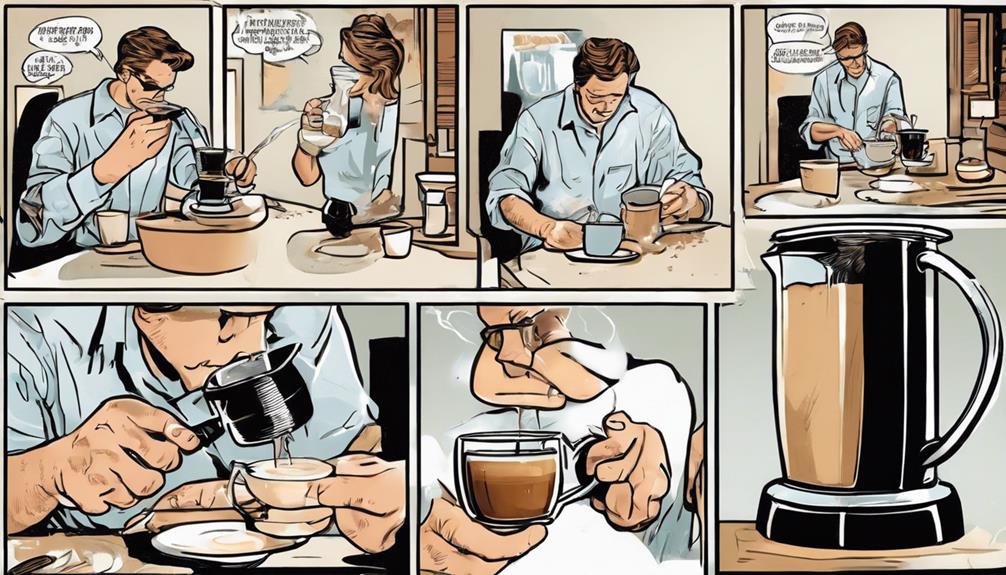
To start preparing your coffee base, focus on selecting high-quality coffee beans that suit your taste preferences.
Next, consider the brewing method that will bring out the best flavors in your blend.
Coffee Beans Selection
For the best flavor and aroma in your blender coffee, prioritize selecting high-quality coffee beans. When choosing your beans, aim for freshness and quality to enhance your coffee experience.
Here are some tips to help you make the right selection:
- Grind Consistency: Grind your coffee beans to a medium-coarse consistency to ensure ideal extraction of flavors.
- Origin and Roast: Experiment with different coffee bean origins and roasts to find your preferred taste profile.
- Ratio Adjustment: Adjust the coffee to water ratio based on your personal preference for strength and richness.
- Salt Addition: Consider adding a pinch of salt to your coffee base to improve the overall flavor profile.
Brewing Method Choice
Enhance the frothiness of your blended coffee by selecting a strong coffee base such as espresso or double brewed coffee. The intensity of these coffee varieties adds depth to your blended creation.
To customize the consistency to your liking, adjust the coffee to water ratio. Experiment with this ratio to find the perfect balance that suits both your taste preferences and desired frothy texture.
For maximum frothiness, ensure your coffee is hot when blending. The warmth aids in creating a smoother and airier texture in your final concoction.
Additionally, don't hesitate to experiment with different types of milk or creamers to elevate both the flavor and frothiness of your blended coffee. Adding flavorings like vanilla extract or sweeteners can further personalize your coffee creation, making it a delightful treat tailored to your preferences.
Frothy Texture Tips
Experimenting with freshly brewed coffee as your base is key to achieving a frothy texture in your blender brew. To enhance the frothiness of your coffee, consider adding a small amount of milk or cream.
Blending for different durations allows you to control the level of froth in your drink. Opting for a high-speed blender can yield better frothing results. For a flavor boost, try adding a pinch of cinnamon or nutmeg before blending.
These tips can help you master the art of creating a frothy and delicious coffee beverage using your blender. One of the keys to creating a creamy froth is to heat the milk first before blending it with the coffee. This helps to create a smooth texture and enhance the overall flavor of the drink. Additionally, using a high-quality coffee bean and grinding it to the appropriate fineness will ensure a rich and flavorful result. For the perfect aeropress coffee, be sure to follow the recommended brewing time and ratio of coffee to water for the best flavor extraction.
- Use freshly brewed coffee as your base.
- Add a small amount of milk or cream for enhanced frothiness.
- Experiment with blending times for desired froth levels.
- Consider using a high-speed blender for better results.
- Elevate your coffee's flavor profile with a dash of cinnamon or nutmeg.
Adding Flavor Enhancers
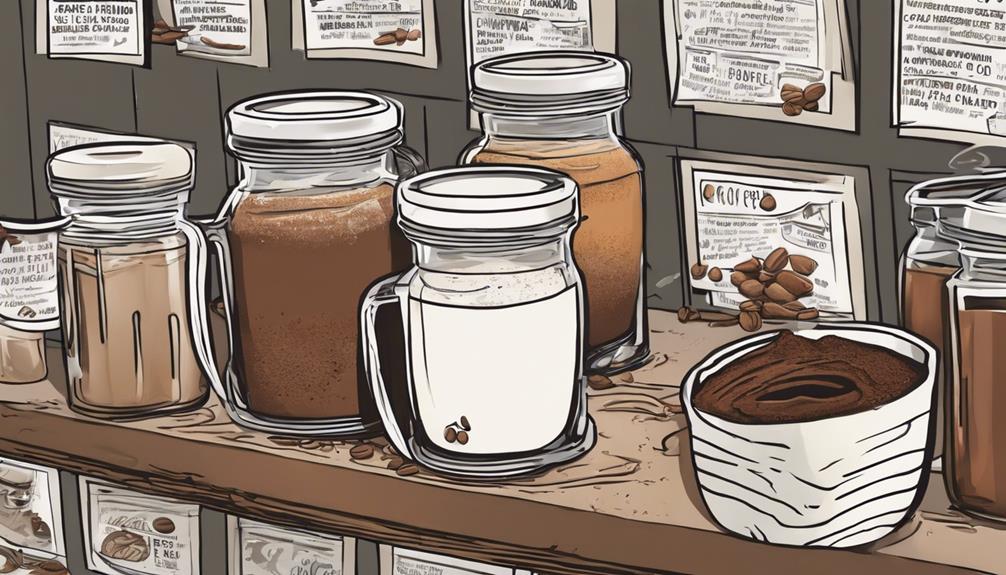
Consider incorporating flavor enhancers like syrups, spices, or extracts into your blended coffee for a unique and personalized taste experience.
Syrups such as vanilla, caramel, hazelnut, or peppermint can add a delightful twist to your drink.
Sprinkling cinnamon, nutmeg, or cocoa powder on top of your blended coffee can elevate the flavors and provide an extra layer of richness.
Don't be afraid to experiment with different combinations to discover your favorite blend that suits your taste buds perfectly.
Additionally, adding a touch of sweetness with sugar, honey, or agave nectar can enhance the overall taste profile of your blended coffee.
Blending for the Perfect Froth

To achieve the perfect airy texture in your blended coffee, focus on blending methods that incorporate air into the mixture.
Here are some tips to help you accomplish that delightful frothiness:
- Blend at high velocity: Increasing the velocity of your blender helps in incorporating more air into the coffee, resulting in a denser froth.
- Blend for an extended period: Prolonged blending times typically lead to a silkier and more airy texture, so don't rush the blending process.
- Add milk or flavorings: Including ingredients like milk, sugar, or flavorings before blending can enhance both the texture and taste of your coffee froth.
- Use a high-performance blender: Opt for a blender with sharp blades and a robust motor to guarantee a smooth and frothy consistency in your coffee.
- Experiment with methods: Try out different blending techniques and ingredients to find the ideal froth level that suits your personal preferences.
Serving and Enjoying Your Creation
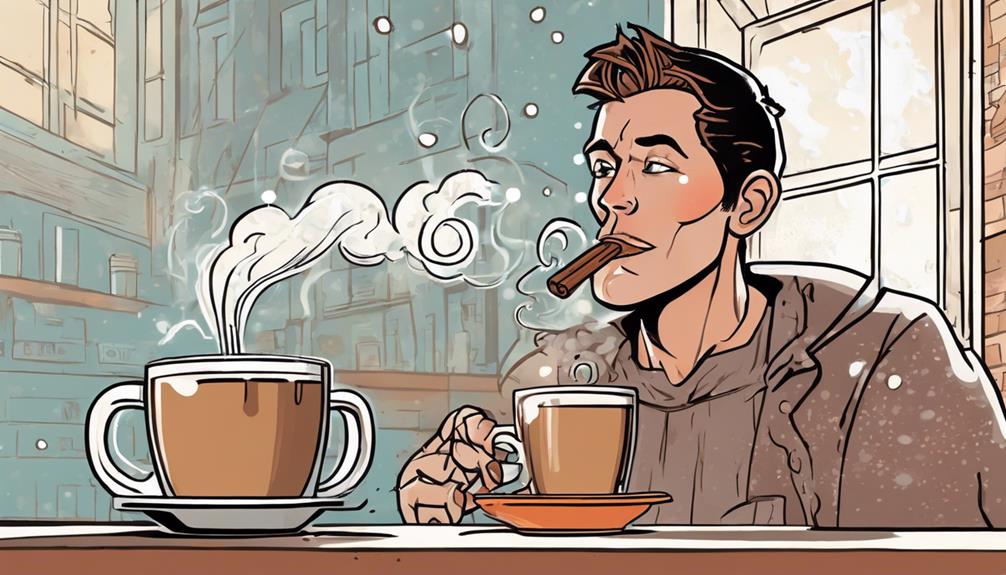
When serving your frothy coffee creation, make sure there's enough space in the cup or glass for the foam to sit atop the aromatic blend. Pour your blender-brewed coffee into a cup or glass, leaving room for the delightful foam to settle gracefully on top.
To fully enjoy your creation, savor it while it's still hot to experience the best flavor and texture. Enhance your frothy delight by customizing it with toppings such as chocolate shavings, cinnamon, or a dollop of whipped cream.
Before taking your first sip, gently stir the coffee to blend the foam with the rich coffee underneath, ensuring a harmonious taste experience. For a touch of creativity, experiment with various coffee beans and flavorings to craft unique frothy delights each time you indulge.
Embrace the art of serving and enjoying your frothy coffee creation to elevate your coffee experience to new heights.
Tips for Customizing Your Blend

- Experiment with different coffee beans from around the world.
- Adjust the coffee to water ratio for your preferred strength.
- Add flavored syrups or spices like cinnamon or nutmeg.
- Use alternative milk options for a creamy texture.
- Try different sweeteners to enhance the taste.
Cleaning and Maintaining Your Blender
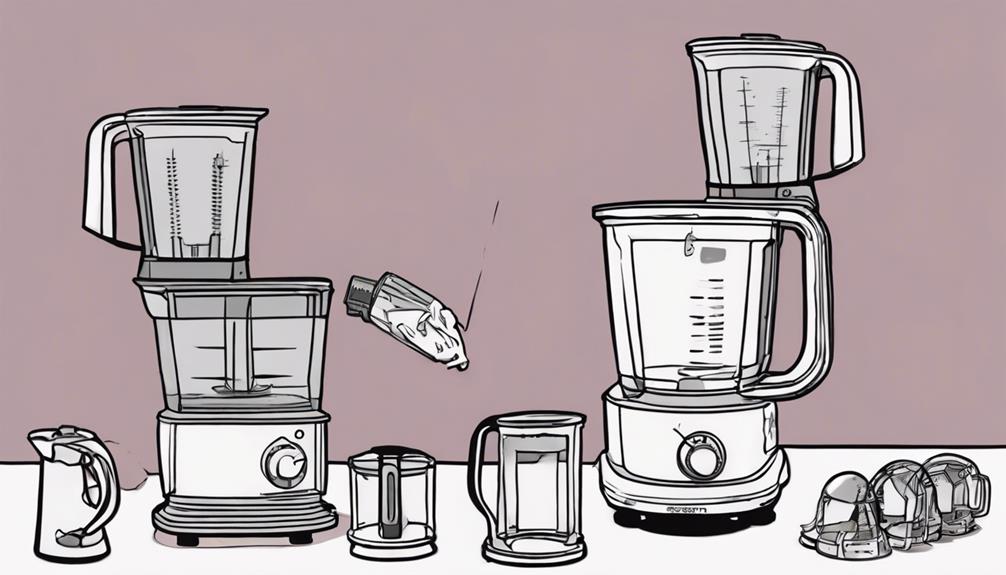
Regularly clean your blender by blending a mixture of warm water and dish soap to remove coffee residue and oils, guaranteeing the best performance and taste in your blended coffee.
For a thorough clean, disassemble the blender and soak the parts in warm, soapy water. Use a brush to scrub hard-to-reach areas like the blender blades and gasket to prevent buildup and maintain peak performance.
After cleaning, rinse the blender thoroughly to eliminate any soap residue that may affect the taste of your coffee.
To prevent mold growth and prolong the life of your blender, store it in a clean, dry place.
Frequently Asked Questions
How to Blend Coffee With Blender?
You can blend coffee with a blender by starting with a strong cup, adding sweeteners, and blending on high for 15-30 seconds. Pour into a mug and enjoy your frothy creation. Experiment with different flavors for a customized treat!
Why Is My Whipped Coffee Foamy?
When you whip coffee, it gets foamy because of the magic blend of instant coffee, sugar, and hot water. By whipping it up, you're incorporating air and creating that delightful frothy texture you love!
How Do You Make Coffee Foam?
To make coffee foam, blend hot coffee with a powerful blender for 20-30 seconds until frothy. Try adding a bit of butter or coconut oil for a creamier texture. Experiment with different milks and sweeteners to customize your perfect foam.
Can I Use a Blender to Grind Coffee?
You can use a blender to grind coffee, but it's best for coarse grounds like for French press. Remember to pulse the blender to control grind size and prevent beans from overheating. Consider a coffee grinder for consistency.
Conclusion
Now that you've mastered the art of blending coffee, you'll never go back to your old boring brew!
With just a few simple steps and a trusty blender, you can whip up a frothy, flavorful cup of java that will leave you feeling like a barista extraordinaire.
So go ahead, get creative with your ingredients, blend away, and indulge in your deliciously frothy creation.
You'll never look at coffee the same way again!
